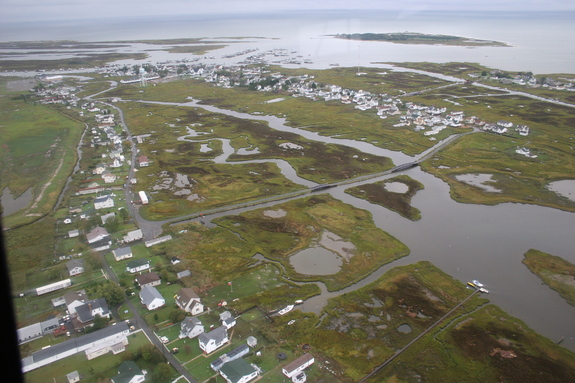727 People on Chesapeake Bay Island Could Become America’s First ‘Climate Refugees'
The Chesapeake Bay's Tangier Island, the site of the town of Tangier (population 727), will become uninhabitable under a midrange estimate of sea level rise due to climate change by 2063, researchers report in the Dec. 10 issue of the journal Scientific Reports.
Already, more than 500 lower-level islands in the Chesapeake Bay have vanished since Europeans first arrived in the area in the 1600s, said study leader David Schulte, an oceanographer with the U.S. Army Corps of Engineers Norfolk District. Engineering efforts could shore up Tangier, but saving the island and its neighbours will ultimately require action on climate.
Tangier is one of the Tangier Islands, a series of grassy spits of land about 14 miles (22 kilometers) east of mainland Virginia, within the Chesapeake Bay. Tangier is the southernmost of the islands, which also include Goose Island, Uppards Island and Port Isobel.
Thirty-nine islands in the Chesapeake Bay were once habitable, Schulte said. Today, Tangier and Smith Island in Maryland are the only two that remain so. Erosion and sea level rise (and, to some extent, other factors like land subsidence due to groundwater pumping) have eaten away at the rest.

Melting glaciers blamed for subtle slowing of Earth’s rotation
The melting of glaciers caused by the world’s rising temperatures appears to be causing a slight slowing of the Earth’s rotation in another illustration of the far-reaching impact of global climate change, scientists said on Friday.
The driving force behind the modest but discernible changes in the Earth’s rotation measured by satellites and astronomical methods is a global sea level rise fuelled by an influx of meltwater into the oceans from glaciers, the researchers said.
“Because glaciers are at high latitudes, when they melt they redistribute water from these high latitudes towards lower latitudes, and like a figure skater who moves his or her arms away from their body, this acts to slow the rotation rate of the Earth,” Harvard University geophysicist Jerry Mitrovica said.
The movement of ice and meltwater is also causing a slight migration of the Earth’s axis, or north pole, in a phenomenon known as “polar wander.
“These are small effects,” but are another indication of the profound impact of human-induced climate change on the planet, Mitrovica said. The observed rotation slowdown does not pose a danger to the planet.
No comments:
Post a Comment